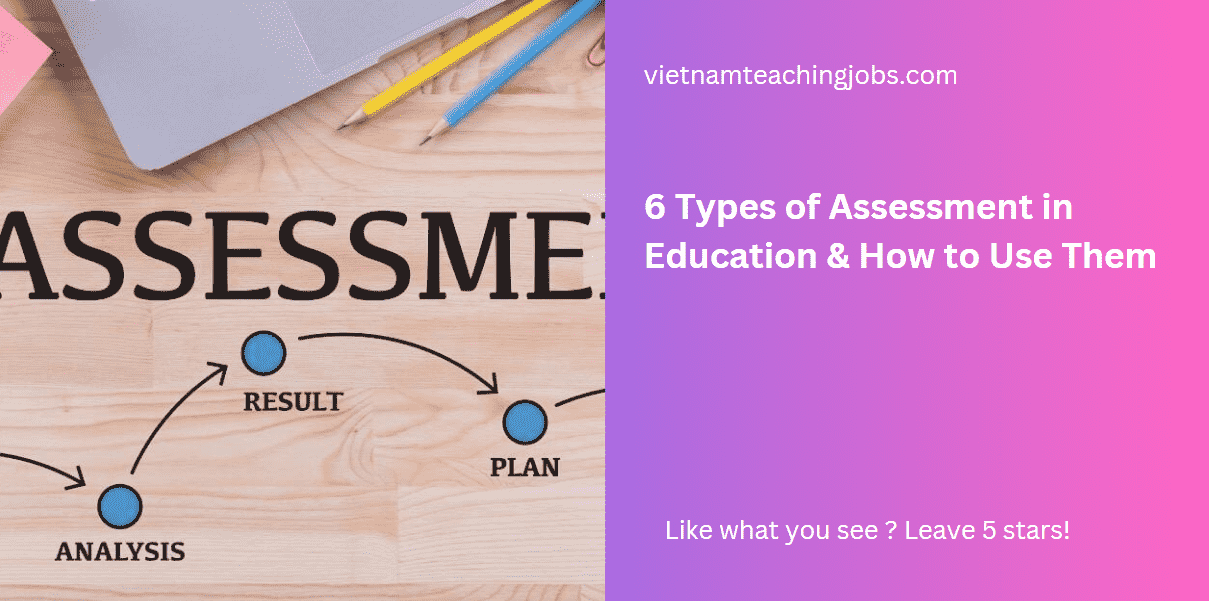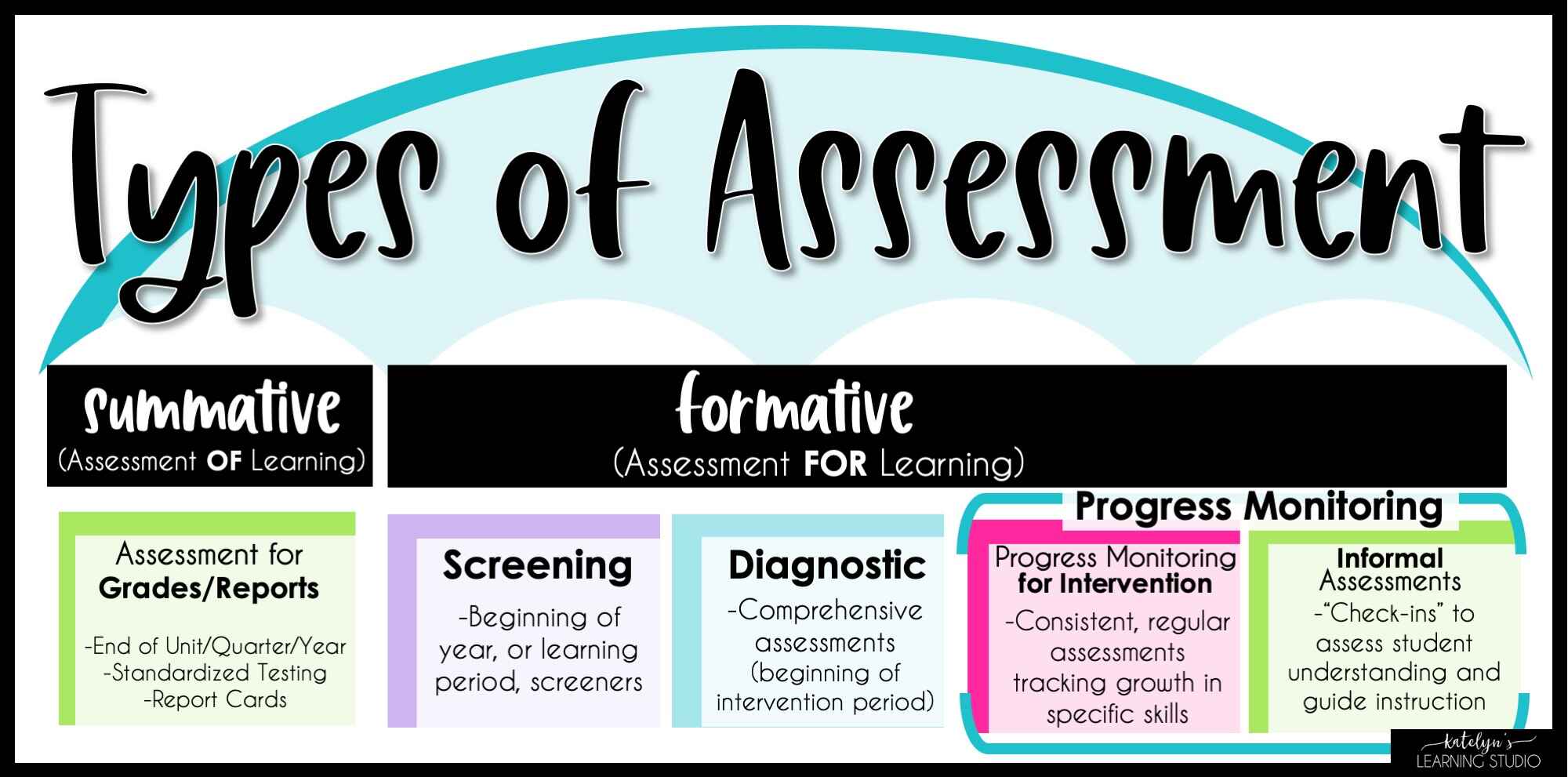The assessment system is one of the important tools in measuring the efforts and efforts of students in the learning process. Through assessment activities, teachers can monitor students’ progress in understanding and application. As a result, teachers can provide constructive feedback to help students improve skills that are lacking and encourage, promote students’ strengths. In this article, VTJ will suggest 6 types of assessment for you to apply in your teaching process.
 How do you define types of assessment in education?
How do you define types of assessment in education?
How do you define types of assessment in education?
Assessment in education refers to the systematic process of gathering, interpreting, and analyzing information about students’ knowledge, skills, abilities, and progress in order to make informed educational decisions. It involves a range of techniques and methods used by educators to evaluate the effectiveness of their teaching strategies, gauge students’ understanding of subject matter, and provide insights into their overall academic development.
The ultimate goal of assessment in education is to enhance the learning experience for students by tailoring instruction to their individual needs and fostering continuous improvement in teaching methods. Through assessment, educators can gain valuable insights into what students have learned, adapt their teaching strategies accordingly, and support students in reaching their full potential.
Read more: Meaningful Feedback for Students: Importance, Tips and Examples
What’s the purpose of different types of assessment?

What’s the purpose of different types of assessment?
Assessment serves as a multifaceted tool in education, fulfilling various roles that contribute to a holistic understanding of student progress and learning outcomes. Different types of assessment serve distinct purposes, each playing a vital role in shaping the educational experience. Here are three key purposes of assessment:
Assessment of learning
This type of assessment, also known as summative assessment, is typically conducted at the end of a learning period or unit to evaluate the overall achievement and mastery of learning objectives. The primary goal is to measure how much students have learned and to assign grades or scores that reflect their performance. Summative assessments include final exams, standardized tests. The insights gained from these assessments help determine whether students have met the desired learning outcomes and provide a snapshot of their academic progress.
Assessment for learning
Assessment for learning, often referred to as formative assessment, takes place throughout the learning process. Its purpose is to provide ongoing feedback to both educators and students, allowing for immediate adjustments to instruction and learning strategies. Formative assessments are not graded; instead, they offer insights into areas of strength and weakness, helping students understand where they stand and enabling teachers to tailor their teaching methods. These assessments can include quizzes, class discussions, peer assessments, and drafts of assignments. By identifying gaps in understanding early on, assessment for learning empowers students to take an active role in their education and supports teachers in addressing individual learning needs.
Assessment as learning
Assessment as learning involves students actively engaging in the assessment process, assuming responsibility for monitoring their own learning progress and growth. This approach encourages metacognition, as students reflect on their own learning strategies, set goals, and make adjustments based on self-assessment. By participating in this type of assessment, students develop a deeper understanding of their strengths and areas for improvement. Portfolios, journals, and self-assessment activities are common tools used in assessment as learning. This approach not only enhances students’ self-awareness and self-regulation skills but also fosters a lifelong learning mindset.
Read more: 13 Types of Students in the Classroom and How to Deal with Them
Why is it important to understand types of assessment in education?

Why is it important to understand types of assessment in education?
Understanding the different types of assessment in education is of paramount importance as it helps educators to make informed decisions that positively impact both teaching and learning. Each assessment type serves a specific purpose and provides unique insights into students’ progress, strengths, and areas for improvement. By comprehending these assessment methods, educators can
- Tailor their teaching strategies to better suit individual learning needs, ensuring that no student is left behind.
- Design a well-rounded curriculum that encompasses various evaluation techniques, fostering a comprehensive view of students’ abilities and achievements.
- Cultivate a more engaging and effective classroom environment, where assessment is not merely a tool for grading but a means to encourage active student participation, self-directed learning, and continuous improvement
- Equips educators with the tools to optimize their teaching practices and provide a meaningful and enriching educational experience for every student.
Read more: How to Teach Writing Skills to Students Effectively in 8 Simple Steps
6 Types of assessment to use in your classroom

6 Types of assessment to use in your classroom
Diagnostic assessment
Diagnostic assessment serves as the essential first step in understanding your students’ baseline knowledge and skills. By administering diagnostic assessments at the beginning of a learning course, educators gain insights into individual students’ strengths, weaknesses, and prior knowledge. This assessment type helps identify any learning gaps or misconceptions that students might have, allowing teachers to tailor their instruction to meet the specific needs of each student. Armed with this information, educators can design lessons that build upon existing knowledge and provide appropriate challenges to foster optimal learning outcomes.
Formative assessment
Formative assessment is an ongoing and dynamic process that takes place during the learning journey. It provides continuous feedback to both educators and students, enabling them to monitor progress and make necessary adjustments in real-time. Formative assessments, such as quizzes, class discussions, and interactive activities, offer insights into how well students are comprehending the material. This assessment type fosters active engagement, as students become more aware of their strengths and areas for improvement. For educators, formative assessment informs instructional decisions, allowing them to adapt their teaching methods, address misconceptions, and ensure that students are on the right track to mastering the content.
Read more: 5 Types of Teaching Styles (Their Pros & Cons)
Summative assessment
Summative assessment occurs at the culmination of a learning period and provides a comprehensive evaluation of students’ overall understanding and performance. Final exams and standardized tests are common examples of summative assessments. The results of these assessments help educators gauge whether students have met the learning objectives for the unit or course. Summative assessments offer a snapshot of students’ mastery of the material and provide valuable data for grading and academic reporting.
Ipsative assessments
Ipsative assessments are focused on personal progress and growth. Instead of comparing students to external standards or benchmarks, these assessments evaluate students’ current performance against their own previous achievements. This approach encourages self-reflection and self-awareness, fostering a sense of responsibility for one’s learning journey. Ipsative assessments motivate students to set and work toward individualized goals, ultimately leading to continuous improvement and a deeper commitment to their own education.
Read more: Why Students Get Bored & How to Engage Bored Students in the Class
Norm-referenced assessments
Norm-referenced assessments provide insights into how a student’s performance compares to that of a larger group or peer population. These assessments help educators understand where an individual student stands in relation to their peers. This information can be particularly valuable for identifying high-performing students, as well as those who might need additional support. Norm-referenced assessments contribute to a broader understanding of student achievement and can inform decisions related to curriculum design and educational policy.
Criterion-referenced assessments
Criterion-referenced assessments measure a student’s performance against specific learning objectives or criteria. These assessments determine whether students have attained a predefined level of mastery in particular skills or knowledge areas. Criterion-referenced assessments provide clear indicators of whether students have met the established standards, making them valuable tools for evaluating the effectiveness of instructional strategies and curriculum design.
Read more: 22+ SMART Teacher Goals Examples in 2024
How to create effective assessments

Don’t stick with the same types of assessment — mix it up!
Make a rubric
Make a rubric to provide clear guidelines for both students and educators. A rubric outlines the criteria and expectations for success in a particular assessment, offering transparency and consistency in grading. It helps students understand what is required to achieve various levels of proficiency and provides a roadmap for improvement. Rubrics also assist educators in maintaining objectivity and fairness while evaluating diverse student work.
Ask yourself why you’re giving the assessment
Ask Yourself Why You’re Giving the Assessment before designing it. Clarify the purpose behind each assessment to ensure alignment with the intended learning outcomes. Are you aiming to evaluate comprehension, critical thinking, problem-solving, or a combination of skills? Understanding the assessment’s purpose helps you select the most appropriate format and type of assessment. This introspection also encourages you to focus on what truly matters in terms of student growth and development.
Read more: 120+ High and Middle School Debate Topics for Students
Don’t stick with the same types of assessment — mix it up!
Utilizing a variety of assessment methods keeps both teaching and learning dynamic and engaging. Different students excel in different assessment formats, so incorporating diverse methods accommodates various learning styles. Combine traditional assessments like tests and quizzes with more interactive approaches like group projects, presentations, and reflective journals. Experimenting with different assessment types also encourages critical thinking and problem-solving skills, as students adapt to new challenges and demonstrate their knowledge in varied ways.
In conclusion, a comprehensive understanding about types of assessment is pivotal in shaping a dynamic and effective educational environment. Each assessment serves a distinct purpose. Build a rating system for transparency and consistency. Remember that assessments are not just tools for grading; they are windows into the learning process, reflections of progress, and blueprints for growth. Hopefully, the sharing of VTJ will help teachers develop a comprehensive assessment system.
Read more: 4 Types of Learning Styles: How to Use VARK Model in Teaching
FAQ
What are the four principles of assessment?
The four principles of assessment are validity, reliability, fairness, and authenticity.
What is the most common type of assessment?
The most common type of assessment is summative assessment, which evaluates students’ overall understanding and performance at the end of a learning period.
Read more: How To Write a Lesson Plan in 6 Steps: The Complete Guide
Are you facing difficulties in finding and securing teaching positions in Vietnam? Are visa procedures causing you trouble? Feeling overwhelmed and directionless upon your arrival in Vietnam for teaching assignments? Don’t worry, VTJ’s English Teaching Placement in Vietnam (EPIV) Program 2024 provides comprehensive support to solve ALL the matters.
👉👉👉 Click HERE to request free consultation




